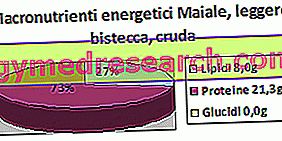Blood glucose levels (blood sugar) are not constant, but follow a curvilinear pattern; phases of growth alternate with others of decrease, depending on the meals and their composition. The minimum values are reached on an empty stomach, for example in the morning before having breakfast, while the glycemic peak is maximum after about an hour - an hour and a half from meals, especially if rich in simple sugars.
The course of glycemic levels after a meal is influenced by the quantity and quality of the food taken. In figure 1, for example, it can be seen how the glycemic peak reached following the ingestion of a solution of 75 grams of glucose, arises long before a normal meal (figure 2), in which carbohydrates (starches) must first be digested, then broken down into glucose.

In FIG. 1 we note that too high glycemic peaks are characteristic of diabetes and of the stages of reduced glucocidic tolerance that precede it; to learn more about the clinical significance of the test, see OGTT: Oral glucose loading test.
As anticipated, when the meal is mixed, the glycemic peak is reached approximately an hour, an hour and a half after ingestion; for adults this peak should be less than 180 mg / dl (renal glucose threshold), even if the optimal values are below 140 mg / dl. In teenagers the glycemic peak is more consistent (<200 mg / dl), as well as in school-age children (<225 mg / dl) and in early childhood (<250 mg / dl). These values also represent the reference parameters for diabetic patients in drug therapy.

In this last image we note the difference in the magnitude and amplitude of the glycemic peak following the intake of foods with high (left) and low (right) glycemic index (glycemic index GI). The blood sugar rises very quickly and quickly when a meal is composed mainly of large quantities of simple carbohydrates (with a high glycemic index), while it increases gradually if the carbohydrates are complex and associated with proteins, fats and fibers (see concepts of index and load glycemic). Examples of high glycemic index foods are glucose, honey, white bread, potatoes, crackers, breakfast cereals, grapes, bananas and polished rice. Among those with a low glycemic index are yogurt, peas, apples, most vegetables, beans, nuts, parboiled rice and milk. The fundamental importance of avoiding the achievement of too high glycemic peaks - through an accurate choice of foods - is illustrated in the article dedicated to the relationship between blood sugar and weight loss.



